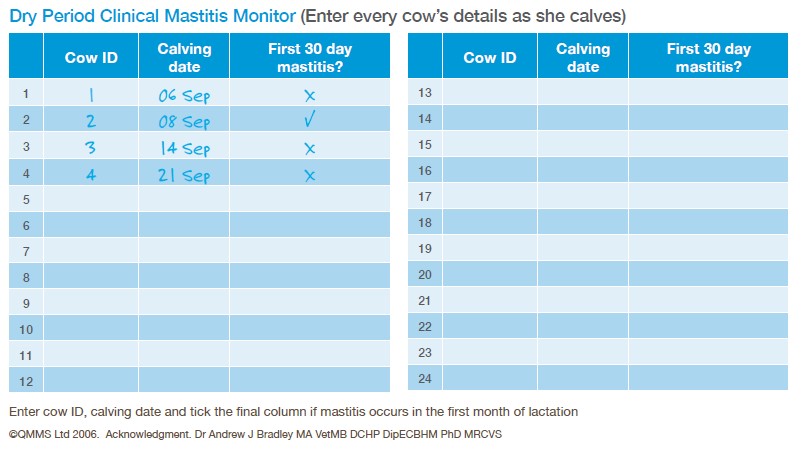- Home
- Knowledge library
- Monitoring calving period outcomes
Monitoring calving period outcomes
Clinical cases of mastitis and their cure rates should be identified when monitoring calving period outcomes. Learn more about how to monitor your herd.
Recording outcomes
It is vital to monitor the outcome of dry period management by recording:
- New intramammary infections (for cows dried off uninfected and for heifers calving into the herd)
- Apparent failures to cure (for cows dried off infected)
- The rate at which clinical mastitis and other diseases around calving are reported
From a mastitis perspective, measures of a successful dry period are:
- The percentage of cows calving down uninfected
- The percentage of cows with clinical events
Learn more about using mastitis data to effectively manage your cattle.
Calculate the percentage of cows calving down uninfected
The California milk test (CMT), also known as the California mastitis test, can be used to check the quarters of each cow for mastitis after calving.
- It is recommended to use the CMT on day four after calving
- No more than 10% of cows should be CMT-positive at day four after calving
Monitoring and recording mastitis data in dairy cows
Collate clinical events
- Less than 5% of cows should develop milk fever in any 12-month period
- Less than 5% of cows should be diagnosed with a left displaced abomasum (LDA) in the first 2 weeks of lactation during the last 12 months
- No more than one cow in every 12 should have a clinical mastitis case in the first 30 days after calving
In the first 30 days after calving, record the cow ID, her calving date and whether she had a case of clinical mastitis

How to use somatic cell count (SCC) data
Use SCC data from the first milk recording (5–30 days in milk) to calculate:
Dry period new infection rate:
- Percentage of cows moving from uninfected status at dry-off to infected (SCC > 200,000 cells/ml) should be <10%
- Percentage of maiden heifers calving in with high SCC should be <10%
Dry period cure rate:
- Percentage of cows moving from infected status at dry-off (SCC > 200,000 cells/ml) to uninfected status (SCC < 200,000 cells/ml) should be >85%
Using electronic records
If you use electronic records to document clinical mastitis cases, your vet will be able to monitor the rate at which cows get mastitis in the first 30 days of lactation and indicate the success of the dry period.

